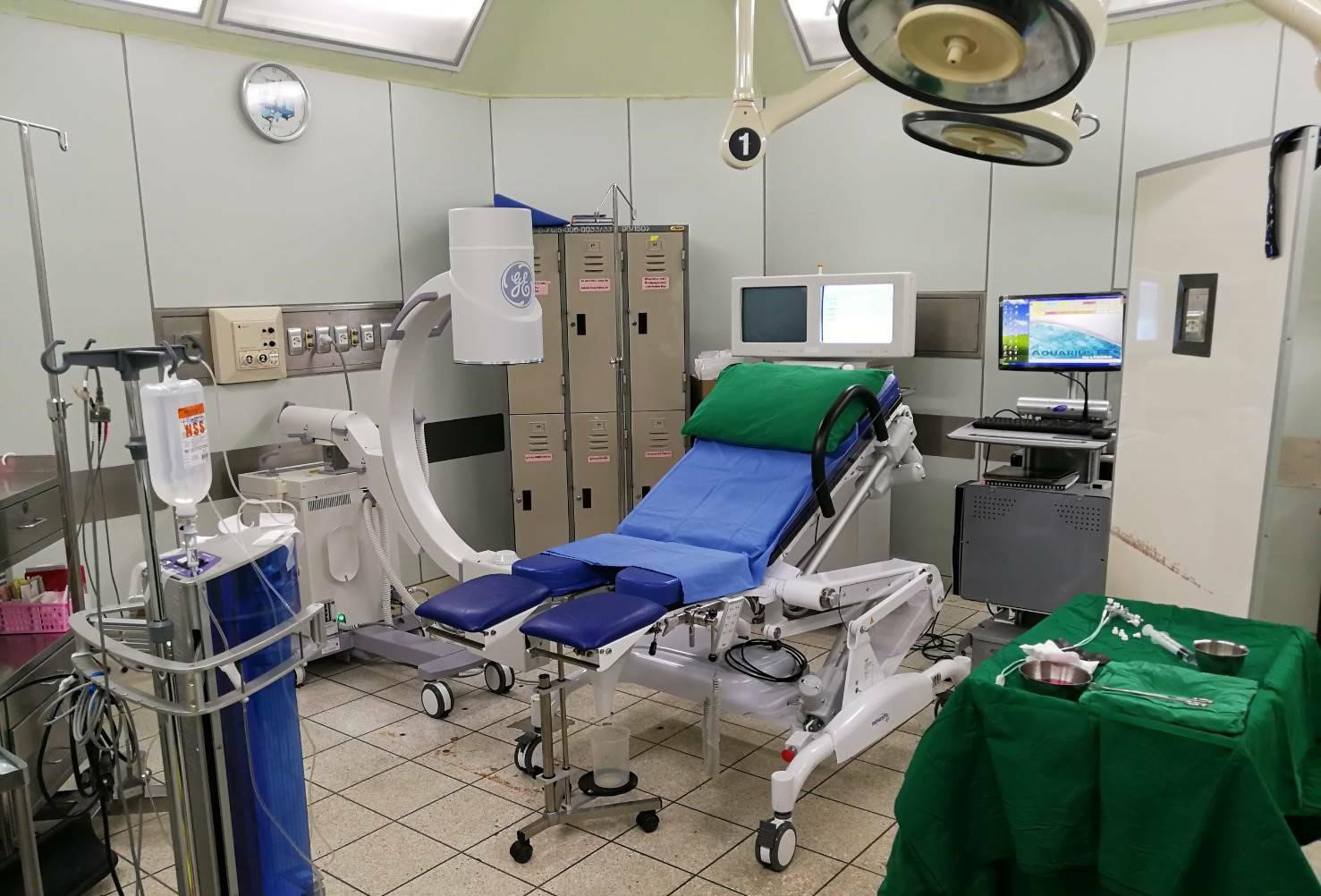Nursing Role on Videourodynamic Study (VUDS)
Main Article Content
Abstract
The kidneys, ureters, urinary bladder and the urethra are the components of the urinary system whose functions including waste and toxins excretion, blood pressure, volume and pH control, as well as electrolyte and metabolite control. If abnormalities in urinary excretion control develop, The chances are that such development could be the major cause of mortality. Urodynamic testing using Videourodynamic Study (VUDS) is a standard method for assessing how well the lower urinary tract functions, by examining the bladder with fluoroscopy. The test reveals the anatomy of the bladder, urethra and the urinary system overall. This allows doctors to identify, if any, the cause of the problem and physical abnormalities, which then provide them with an effective treatment and a follow up plan, accordingly. This article’s aim is to provide nurses, patients’ closest assistants, with understanding of the elements and process of urodynamic testing using Videourodynamic Study (VUDS). As a result, not only can they provide comprehensive care to patients physically and mentally from the pre-examination phase to the post-examination phase, but also advice their family on the matter. This leads to a well-cooperated intra examination, effective treatment, and ultimately, the prevention of complications from the examination.
Article Details
References
วลีรัตน์ เศวตสุทธิพันธ์. กลไกการทำงานของทางเดินปัสสาวะส่วนล่างในภาวะปกติ. ใน: วสันต์ เศรษฐวงศ์, วชิร คชการ. ตำรากระเพาะปัสสาวะพิการจากระบบประสาท 1. กรุงเทพฯ: ไอเดีย อินสแตท พริ้นทิ่ง, 2560:3-19.
คัทรียา รัตนวิมล. การพยาบาลผู้สูงอายุที่มีปัญหากลั้นปัสสาวะไม่อยู่. วารสารพยาบาลศาสตร์ มหาวิทยาลัยนเรศวร [อินเทอร์เน็ต]. 2552;3(2):1-12. เข้าถึงได้จาก http://www.nurse.nu.ac.th/Journal/data/Vol.3%20No.2/001.pdf
Fonte N. Urological Care of the Spinal Cord Injured Patient. JWOCN. 2008;35(3):323-31.
Stav K, Siegel YI, Beberashaili I, Sella HZ, Zisman A. Provision of Information Leaflet before Urodynamic Study Reduces the Pre-Examination Anxiety Level. Neurourol Urodyn. 2016;35(7):805-8.
Permpech R, Butsripoom B. The Role of Perioperative Nurse: Health Education for Pre and Postoperative Visiting. Rama Nurse J. [Internet]. [cited 2019 Jul 31]; 22(1):9-20.
มุทิตา จองวรรณศิริ, วิทย์ วิเศษสินธุ์. การพยาบาลผู้ป่วยกระเพาะปัสสาวะพิการจากการบาดเจ็บไขสันหลังที่รับการตรวจยูโรพลศาสตร์. Rama Nurse J [อินเทอร์เน็ต]. 2562;25(3):270-1. เข้าถึงได้จาก https://med.mahidol.ac.th/nursing/jns/DocumentLink/D_100604.pdf.
จักรกฤษณ์ จันทร์อู่. การประเมินผู้ป่วยและการสืบค้นเพิ่มเติม. ใน: วสันต์ เศรษฐวงศ์, วชิร คชการ. ตำรากระเพาะปัสสาวะพิการจากระบบประสาท. 1. กรุงเทพฯ: ไอเดีย อินสแตท พริ้นทิ่ง, 2560:33-54.
Winters JC, Dmochowski RR, Goldman HB, Herndon CD, Kobashi KC, Kraus SR, et al. Urodynamic Studies in Adults: AUA/SUFU Guideline. J Urol. 2012;188(6 Suppl):2464-2472.
ฉันท์หทัย นันท์หทัย, ศศิวิมล ศรีสุขโข. Bladder Test, Make It Simple for General Gynecologist. [Internet]. 2561. [เข้าถึงเมื่อ 1 เมษายน 2564]. เข้าถึงได้จาก https://w1.med.cmu.ac.th/obgyn/index.php?option=com_content&view=article&id=1410:bladder-test-make-it-simple-for-general-gynecologist&catid=45&Itemid=561.
Jonathan S. Berek, MD, MMS. Lower Urinary Tract Disorders. Shawn A. Menifee, Ingrid Niggard. Berek & Novak’s Gynecology. 15th ed. Stanford, California: Editorial Assistant & Design. Deborah L. Berek, MA; 2012.p.874–84.
ชินภัทร์ จิระวรพงศ์, ณัฐเศรษฐ มนิมนากร, เอกสิทธิ์ ภู่ศิริภิญโญ. การปฏิบัติตามแนวทางการให้ยาปฏิชีวะป้องกันการติดเชื้อทางเดินปัสสาวะก่อนการถ่ายภาพรังสีเพื่อตรวจกระเพาะปัสสาวะและท่อปัสสาวะขณะขับถ่าย. เวชศาสตร์ฟื้นฟูสาร. [อินเทอร์เน็ต]. 2552;19(1):1-7. เข้าถึงได้จาก http://rehabmed.or.th/main/wp-content/uploads/2015/05/L-274.pdf.
Dunnick NR, Sandler CM, Newhouse JH, Textbook of Uroradiology, 3rd ed, New York: McGraw-Hill; 2001.p.330-3.
Miki DG, Tambyah PA. Engineering Out the Risk of Infection with Urinary Catheters. Emerging Infectious Diseases. 2001;7:342-7.
Rushton HG, Urinary Tract Infections in Children: Epidemiology, Evaluation, and Management. Pediatr Clin North Am 1997; 44: 1139-69.
Danforth TL, Ginsberg DA. Neurogenic Lower Urinary Tract Dysfunction: How, When, And with Which Patients Do We Use Urodynamics? Urol Clin North Am. 2014; 41:445-52.
Xavier B, Ornella L, Van B, Lysanne C, Jacques C. Prospective Evaluation of Anxiety, Pain, and Embarrassment Associated with Cystoscopy and Urodynamic Testing in Clinical Practice. Can Urol Assoc J. 2017;11(3-4):104-10.
Rahardjo HE, Tirtayasa PM, Afriansyah A, Parikesit D, Akbar MI. The Effectiveness of a Three-Day Course Antibiotic Post-Urodynamic Study in Preventing Lower Urinary Tract Infection. Acta Med Indones. 2016;48(2):84-90.






